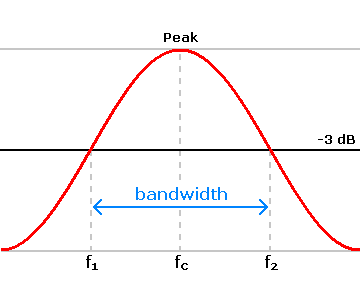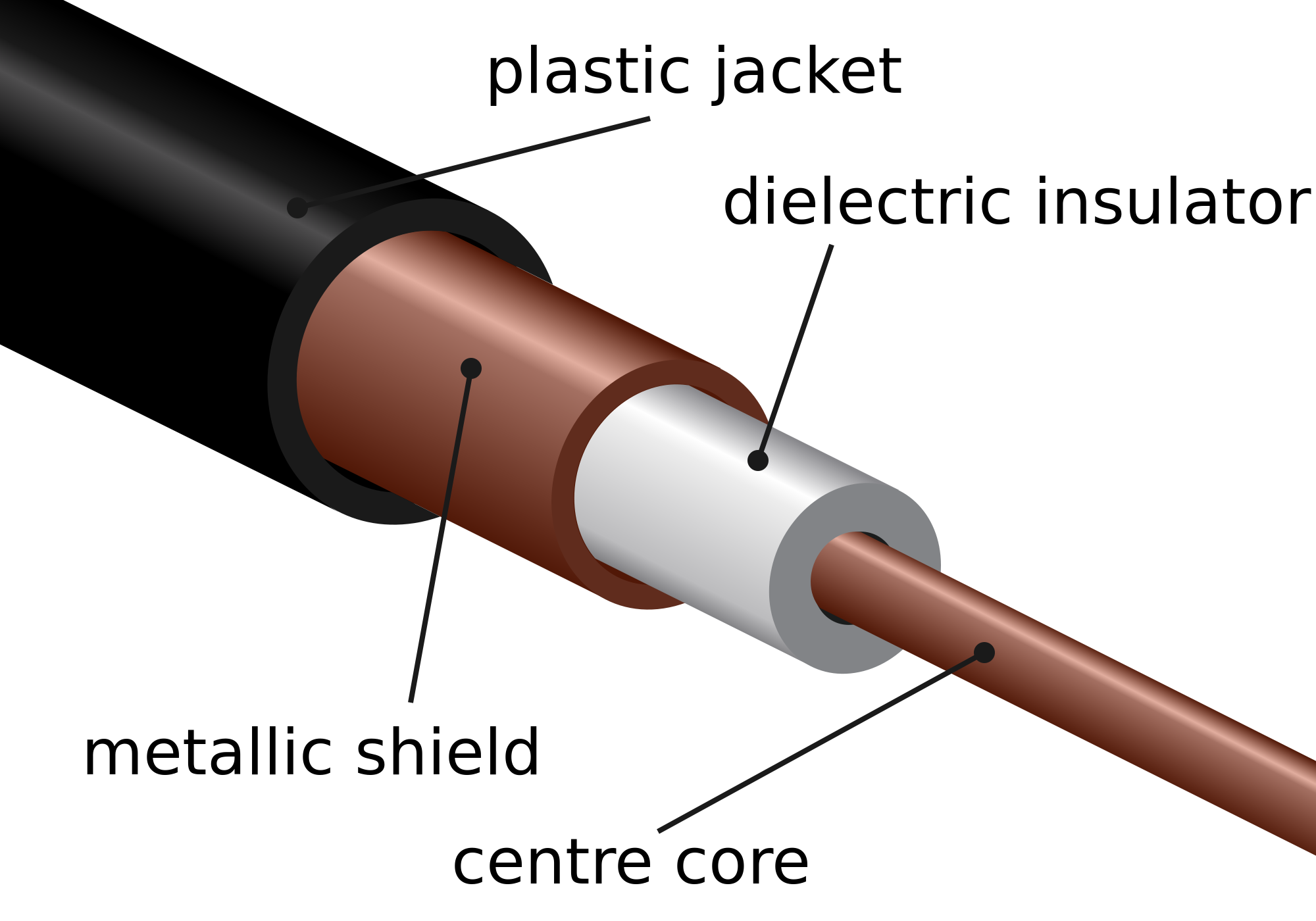Hello there! Today we will discuss the concept of transmission media and will look at some of the mediums and the bandwidth they offer for transmission of data or communication. To begin with, let’s have a brief revision of the concept of bandwidth.
Suggested Videos
Bandwidth
If we assume a signal to be composed of a various number of frequencies, then Bandwidth is defined as the difference between the highest frequency and the lowest frequency of the signal.

As seen in the above figure the bandwidth ‘B’ of the signal is the difference between the lowest frequency ‘F L‘ and the highest frequency ‘FH‘. With the above concept clear, we proceed to the main topic of our discussion.
Transmission Media
Any signal that is generated needs to be moved from one place to the other. To that effect, each signal uses a medium to facilitate this transmission. This medium can be solid, liquid, gas, plasma or even vacuum; depending on the type of signal being generated and methods being employed for its transmission. Let’s have a look at some of these transmission media.
Browse more Topics under Communication Systems
- Basic Terminology Used in Communication Systems
- Propagation of Electromagnetic Wave
- Bandwidth of Signals
- Modulation and Its Necessity
- Amplitude Modulation
- Production of Amplitude Modulated Wave
- Detection of Amplitude Modulated Wave
Solids
Solids are often used as transmission mediums. For eg Sound can travel through a piece of iron. That is why we can hear a distant train when we place our ears on a track or we can hear sounds from the other room if we place our ears to the wall. Fibre optic cables, glass, metals are all solid mediums.
Liquids
Liquids can easily be used as transmission mediums for any wave. How else does water boil if not for conduction currents set up in it on heating the beaker or utensil? Light too can pass through a liquid; the reason why we can see fishes in an aquarium or a pond.
Gases
Gases are very effective transmission mediums. You can always hear your friends calling you from a distance if they shout loudly. Usage of Mobile phones which are free from any wire connection is only possible due to air being used as a transmission medium.
Vacuum
We know that electromagnetic waves can travel through a vacuum as light and heat from the sun reach the earth travelling through empty space. Just like a signal that may be composed of a number of frequencies and thus possesses a certain bandwidth, any transmission medium being used too has a certain bandwidth limit which means that it is only at this bandwidth can a certain wavelength pass through the medium.
Just like the bandwidth of any signal is measured in Hertz so is the bandwidth of the transmission medium too measured in Hertz. Modern communication is so robust and well developed particularly because of the sound knowledge and efficient utilization of the bandwidths of these transmission media.
This knowledge has proved to be paramount to ensure the quality and reliability of the medium and the integrity of the signal being sent from one place to the other. Let us have a closer look at various transmission media used in modern times and their bandwidths.
Transmission Medium Bandwidths
a. Coaxial Cable
The coaxial cable is a modern, solid-based transmission medium used for long distance communications. It consists of a set of copper wire insulated by plastic coating to prevent damage. Their bandwidth ranges from 750 MHz up to 6000 MHz. It depends on the kinds of usage for the system. For eg. The bandwidth of a telephone voice cable is around 4000 Mhz.

b. Optical Fibre
Similar to a coaxial cable as the name suggests fibre optic cables are made from poly fibres and as completely transparent and transmit data in form of light. They are highly dependable and ensure almost nil attenuation of the signal. They are very thin with some diameters ranging in the order of the thickness of the human hair. These fibre tubes are then used in a bunch held together just like fibres of a rope.
With such properties comes a very high-frequency bandwidth range as they can operate at a bandwidth of 1 TeraHertz to 1000 TeraHertz ( 1 TeraHertz = 10^12 Hz)

c. Free Air
More often then not in everyday communication, free air is used for a large number of transmissions and that it serves as one of the most widely used transmission media with different bandwidth for different uses. For example:
- A bandwidth of 1000 KHz and operating between 500 to 1600 kHz is used for Standard AM broadcasts.
- FM broadcasts use a bandwidth of just 20 MHz ranging from 88-108 MHz
- Televisions use a bandwidth of 18 MHz in 54-72 MHz range for VHF and use a bandwidth of 400 MHz in 420-890 MHz for UHF frequencies.
- Cellular devices operate in a bandwidth of 840-935 MHz.
- On the other hand, satellite communications use a bandwidth of 3-7 GHz for communication.
Thus it is evident that free air offers a very large number of possible bandwidths for communication. Next up is the use of Spectrum allocations.
Spectrum Allocations
A spectrum is a large bandwidth of frequencies. Cellular or digital methods use this bandwidth for communication. These allocations have arrived with the help of international plans and policies. Often they require an upgrade of existing systems and technologies.
For example: In our country only recently has 4G communication for cellular device accessible. The upcoming years will see the introduction of the 5G spectrum as well. With such huge bandwidths, easy, reliable and ultra-fast data transmissions are possible regularly.
Thus we have discussed the concept of transmission media and seen the basis of available bandwidths in different media and their optimal utilization in the current times. Sound knowledge of these concepts will help the reader easily grasp complex ideas in the future.
Solved Example for You
Question: Find the bandwidth of a wavelength set between the ranges of 1000 MHz and 33o MHz
Solution: Bandwidth = upper limit – lower limit
= 1000 – 330 = 670MHz






Leave a Reply